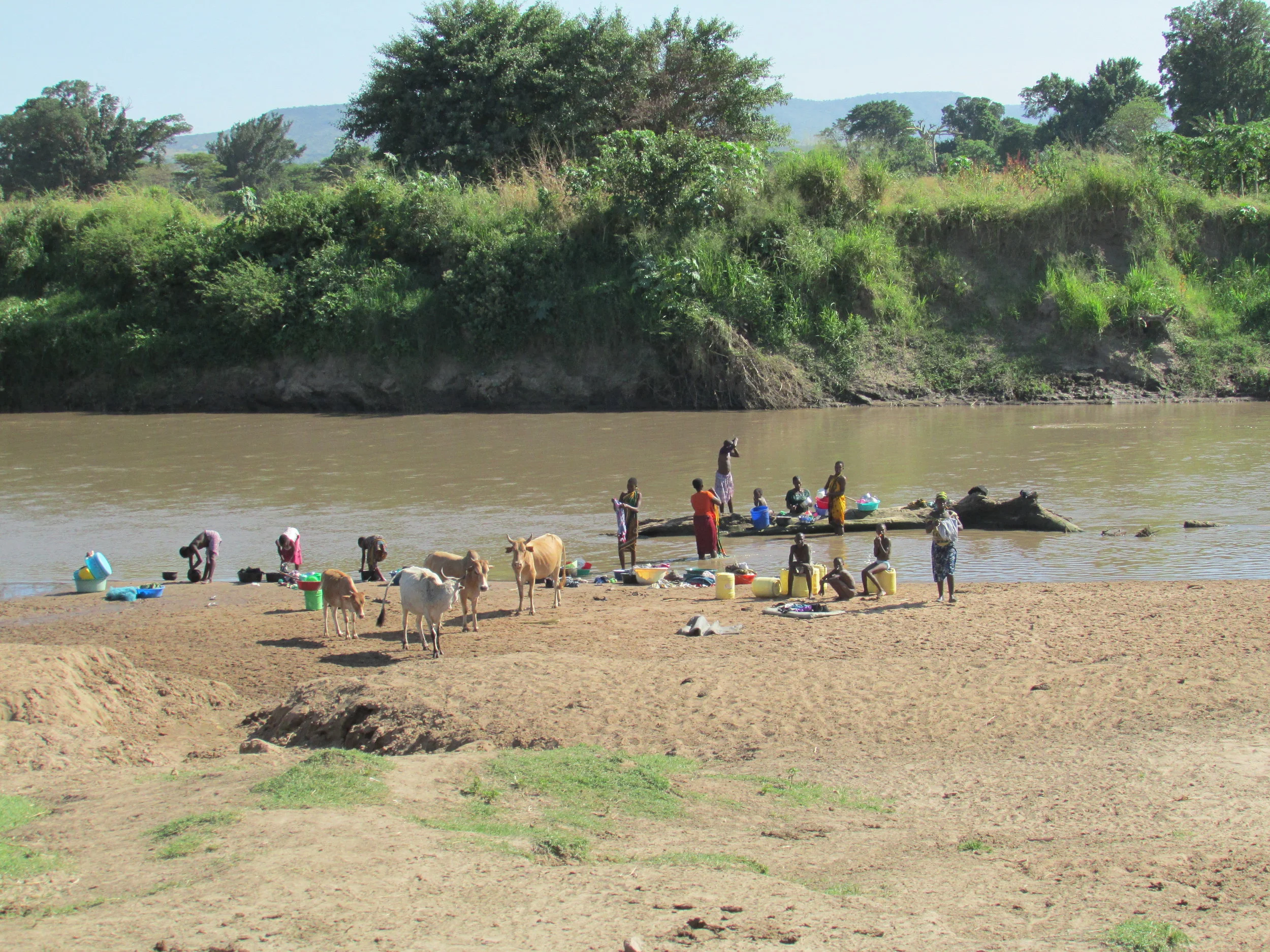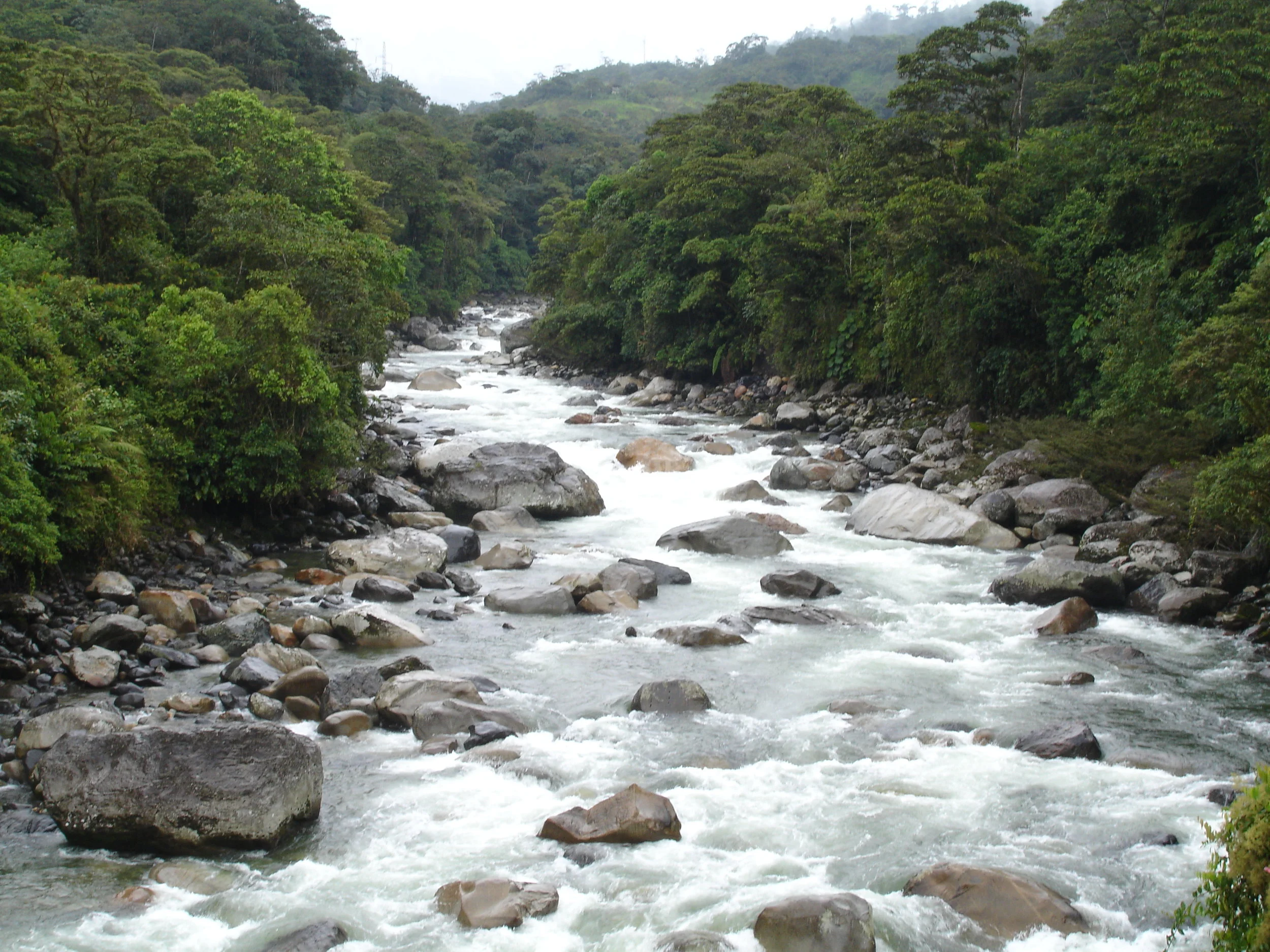Flow - Ecology Relationships for Tropical Rivers
We explore the dynamics of river flow and the effects that their alterations have on ecosystems and fauna populations within them.
Environmental flow assessment for Tanzanian rivers
Overview: In 2002, the East African country of Tanzania revamped its legal and institutional frameworks for freshwater management, granting ecosystem needs for water second priority (after basic domestic needs) in water allocation decisions. Since then, concentrated efforts have been made to conduct environmental flow assessments (EFA) for Tanzania's major river systems, using holistic approaches. Tropical Rivers Lab scientists have participated in EFAs for the Mara, Wami, and Ruvu rivers. We have also worked to elevate scientific understanding of freshwater ecosystems and their biodiversity in Tanzania, and the strengths and assets of local human populations to protect it.
Main Collaborators: Tanzanian Ministry of Water and Irrigation, University of Dar es Salaam, Sokoine University of Agriculture, Yale University, Tanzanian National Parks (Saadani and Serengeti N.P.)
Relevant Publications
- Kabogo, J., E.P. Anderson, P. Hyera, and G. Kajanja. 2017. Facilitating public participation in freshwater resources management: Reflections from Tanzania. Ecology and Society 22(4):26. PDF
- McClain, M.E., A. Subalusky, E.P. Anderson, P. Ndomba, J. Mtamba, R. Tamatamah, C. Mligo, and J. Ayieko. 2014. Comparing flow regime, channel hydraulics and biological communities to infer flow-ecology relationships in the Mara River of Kenya and Tanzania. Hydrological Sciences Journal 59:1-19. PDF
- Anderson, E.P. (ed). 2016. A Rapid Assessment of the Aquatic and Riparian Biota of the Wami-Ruvu Basin, Tanzania. Global Water for Sustainability Program. 66 pages.
- Anderson, E.P. (ed). 2014. Environmental Flow Recommendations for the Ruvu River Basin, Tanzania. Global Water for Sustainability Program. 52 pages.
- Subalusky, A., E.P. Anderson, and M.E. McClain. 2012. An Environmental Flow Assessment for the Mara River Basin, Kenya and Tanzania. Global Water for Sustainability Program, Miami, FL.
- Anderson, E.P. and J. Sarmett. 2008. An initial environmental flow assessment for the Wami River sub-Basin, Tanzania. Technical report prepared for the Tanzanian Ministry of Water and Irrigation. Available online: http://wami.fiu.edu
Anderson, E.P., C.G. McNally, B. Kalangahe, H, Ramadhani, and H. Mhitu. 2007. The Wami River Estuary, Tanzania: A rapid ecological assessment. Technical report prepared for the Tanzania Coastal Management Partnership and the Coastal Resources Center, University of Rhode Island. 35 p. Available online at: www.globalwaters.net Publications-Project Reports.
Examining importance of Andes-to-Amazon river connectivity
Overview: The Andean Amazon region is a global center of species richness and endemism across many taxonomic groups, and its rivers provide vital connections between high elevation areas of the Andes and the lowland Amazon. For example, Andean Amazon rivers supply massive quantities of sediments, nutrients, and organic matter to the lowland Amazon, while also acting as pathways for movement of migratory fishes. Andean origin rivers also factor into cosmologies of many Amazonian peoples; many indigenous groups recognize important cultural features of rivers that connect them with ancestors. Tropical Rivers Lab's research explores the many facets of Andes-to-Amazon linkages using both ecological and social science approaches.
Main Collaborators: Wildlife Conservation Society, Pontificia Universidad Javeriana, Cornell University, Universidad San Francisco de Quito, Universidad Nacional Mayor San Marcos, Faunagua, University of Florida
Relevant Publications
- Anderson, E. P., Jenkins, C. N., Heilpern, S., Maldonado-Ocampo, J. A., Carvajal-Vallejos, F. M., Encalada, A. C., … Tedesco, P. A. 2018. Fragmentation of Andes-to-Amazon connectivity by hydropower dams. Science Advances, 4(1).
- Jimenez-Segura, L.F., E.P. Anderson, and >15 coauthors. 2016. Ichthyofauna of the Tropical Andes. Pp: 23-56 in: Tognelli, M. et al. (eds). Estado de la Conservación de la Biodiversidad de Agua Dulce en los Andes Tropicales. Gland, Suiza, Cambridge, UK, and Arlington, USA. International Union for the Conservation of Nature.
- Anderson, E.P., J.A. Marengo, R. Villalba, S. Halloy, B. Young, D. Cordero, F. Gast, E. Jaimes, and D. Ruiz. 2011. Consequences of climate change for ecosystems and ecosystem services in the tropical Andes. Chapter 1 in: Herzog, S.K., R. Martinez, P.M. Jorgensen, and H. Tiessen (eds). Climate change effects on the biodiversity of the tropical Andes: An assessment of the status of scientific knowledge. Inter-American Institute of Global Change Research (IAI) and Scientific Committee on Problems of the Environment (SCOPE). San Jose dos Campos and Paris.
- Anderson, E.P., A. Encalada, J.A. Maldonado-Ocampo, M.E. McClain, H. Ortega, and B.P. Wilcox. 2011. Environmental flows: A concept for addressing effects of river alterations and climate change in the Andes. Chapter 23 in: Herzog, S.K., R. Martinez, P.M. Jorgensen, and H. Tiessen (eds). Climate change effects on the biodiversity of the tropical Andes: An assessment of the status of scientific knowledge. Inter-American Institute of Global Change Research (IAI) and Scientific Committee on Problems of the Environment (SCOPE). San Jose dos Campos and Paris. PDF
- Herzog, S.K., P.M. Jørgensen, R. Martinez Güingla, C. Martius, E.P. Anderson, D.G. Hole, T.H. Larsen, J.A. Marengo, D. Ruiz Carrascal, and H. Tiessen. 2011. Effects of climate change on the biodiversity of the tropical Andes: the state of scientific knowledge. Summary for decision makers and policy makers. Inter-American Institute for Climate Change Research (IAI), São Paulo, Brazil. For more information: http://www.iai.int/index.php?option=com_content&view=article&id=115&Itemid=129
- Litzinger, M., E.P. Anderson, B. Martinez-Guerrero, and J.A. Maldonado-Ocampo. 2014. Where the Andes meet the Amazon. The Fairchild Tropical Botanic Garden magazine. In press.

